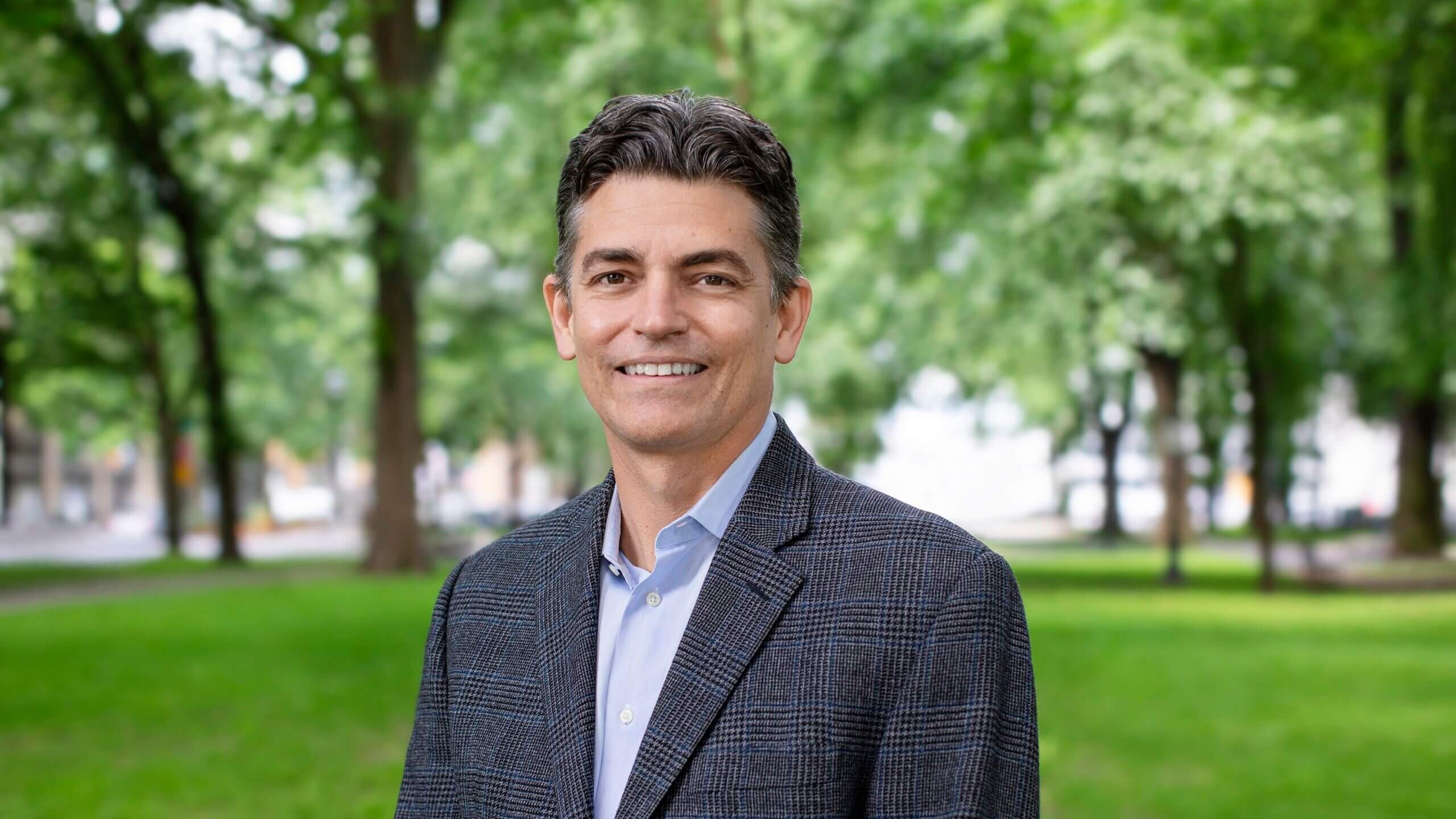Andy Mendenhall runs Central City Concern, a Portland nonprofit larger than most city governments in Oregon.
Central City Concern employs 1,200 people and will generate revenue of about $150 million this year. It operates 2,600 units of affordable housing and runs 29 different programs in 13 facilities, covering the gamut from basic medical care to post-incarceration life skills to intensive drug treatment at Hooper Detox Center.
Mendenhall, a physician, joined Central City in 2017 as senior medical director for substance use disorder services and became CEO in July 2022. That gives him a unique vantage point on the mental health and addiction crisis that has poleaxed the region.
Last week, Mendenhall came to our offices to discuss conditions he’s seeing. We asked him to diagnose Portland’s ills and to prescribe a cure. Here’s what he told us, edited for brevity and clarity:
Nobody has been in charge.
“One of the greatest challenges in this state is that we’ve historically lacked a strategy for our behavioral health care system. That shows up as Oregon historically being in the bottom five. And sometimes we’re at the bottom in terms of our access on a per-capita basis to behavioral health services—in particular, substance use disorder services.”
One of the problems is a lack of data—and that nobody has asked for it.
“We haven’t really had a sense of how many people have a particular problem. Whether that’s severe pervasive mental illness, opioid use disorder, or stimulant use disorder, and then where those folks are getting services—or not getting services. And then more broadly, how those populations are changing over time.
“I’m disappointed that no one has asked for this data before.”
New data shows people are in worse shape than we knew. Meanwhile, there are no beds at Oregon State Hospital for people who need to be civilly committed.
“There’s never been a clear understanding at the state level and, up until recently, within our region of how big those populations of individuals are, who have significant substance use disorder, behavioral health, or both issues. They’re prodigious consumers of health care. We’re starting to see evidence that individuals who fall into this cohort are being hospitalized for physical health conditions at rates up to 12 to 14 times more than the average adult.”
The new data drew on about 400,000 Medicaid patients in the tri-county area. It found their conditions have gotten worse in the past couple of years.
“Acuity went through the roof because people had less access to care. My clarion call is that the level of care mismatch has never been greater between what people have access to and what they actually need. What does that mean? People with fentanyl use disorder, people with methamphetamine use disorder, need access to residential treatment beds more than they ever have, for longer periods of time. And those beds don’t exist at the scale that we need them to.”
The people who do get treatment are dropping out more often and faster. Often that means they never find housing.
“At our residential treatment program, 21-day engagement has dropped from 80% right down to 65%. That’s almost a pure fentanyl impact. The reasons for that are biological: People who have fentanyl use disorder have a protracted withdrawal syndrome that has to do with the fact that the drug is fat soluble. It takes an extended period of time for those individuals to withdraw and get stabilized on medication.
“If we look at our alcohol and drug-free transitional housing, discharge to homelessness has gone up from about 5.7% to 15%. Our transitional housing completion rates have dropped from just shy of 60% to just above 40%. So, folks aren’t completing programming. That doesn’t mean that they’re all leaving to homelessness. But they’re not graduating.”
The answer: more residential treatment capacity.
“Many of these individuals would be doing better if they got a residential treatment episode of care for 30 to 60 days. We need a tranche of inpatient psychiatric beds locally: somewhere between 40 to 50 inpatient psych beds. And we need upwards of 200 secure residential treatment beds.”
Multnomah County pursued a flawed housing policy.
“It’s easy to look in the rearview mirror and identify that there was a philosophy within the Portland metropolitan area that was ‘housing first’ strategy, as in only build housing units. And that was not an appropriate strategy for the region. Former Multnomah County Chair Deborah Kafoury and Marc Jolin, the prior leader of the Joint Office of Homeless Services, had a very specific strategy that was focused on building housing units and not looking at the broader needs of a population of folks for whom you can’t take a housing-only approach to the intervention.”
Residents at Central City’s housing units are doing a lot of damage.
“Having unmet high-acuity behavioral health needs in the community and having an amphetamine epidemic as well as a fentanyl epidemic have led to individuals having escalated behavior—within our housing but also in the lobbies of our clinics. We have people who have unmet behavioral health needs who come in, who are agitated, who are psychotic, who are hurting themselves, hurting our facilities, and hurting our staff. Our general liability insurance costs have gone up more than 300% in the last four fiscal years. And we have been told that our problems are also not unique, that many other supportive housing providers within the region are experiencing the same type of unmanaged behavioral health acuity among clients.”
